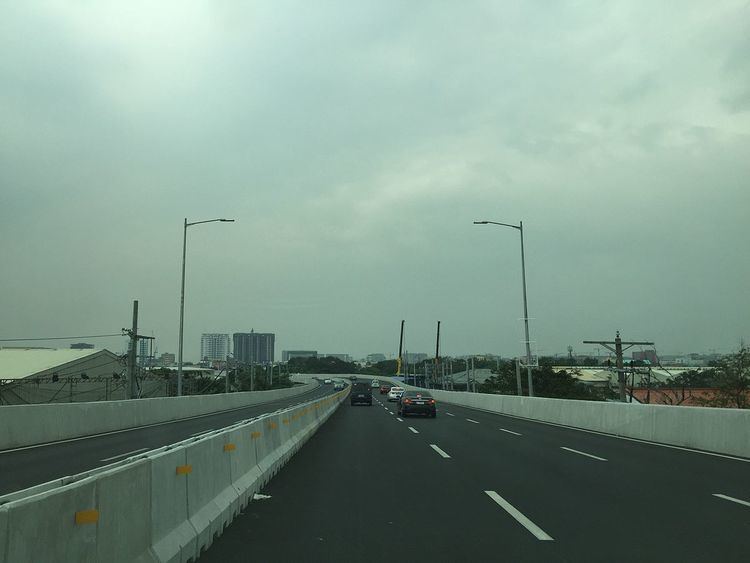Constructed 22 September 2016 | Length 11.6 km | |
 | ||
Existed: September 22, 2016 – present From: Jose Diokno Boulevard in Parañaque Majorjunctions: Macapagal BoulevardManila–Cavite Expressway (E3)Elpidio Quirino Avenue (N62)Domestic Road From: NAIA Expressway in Parañaque Majorjunctions: Airport Road (N191) in Pasay | ||
The NAIA Expressway (NAIAEX, NAIAX and Ninoy Aquino International Airport Expressway) is an 11.6-kilometer (7.2 mi) elevated expressway system in Metro Manila, Philippines, which links the Metro Manila Skyway to the Ninoy Aquino International Airport (NAIA) and Entertainment City. It runs along Andrews Avenue, Electrical Road and NAIA Road connecting the Skyway to Ninoy Aquino Avenue, Macapagal Boulevard, Jose Diokno Boulevard and the Manila–Cavite Expressway. The roadway is the first airport expressway in the Philippines which opened in September 2016. It is located in the cities of Pasay and Parañaque.
Contents
- Map of NAIA Expy Pasay Metro Manila Philippines
- Route description
- History
- Technical specifications
- Tolls
- References
Map of NAIA Expy, Pasay, Metro Manila, Philippines
Route description
From the Sales Interchange (NAIA exit) of the Metro Manila Skyway, the expressway heads to the southwest and runs along Sales Road across Villamor Airbase and Newport City. It then curves to the northwest on Andrews Avenue towards the entrance to NAIA Terminal 3 and continues along the northern perimeter of the airport towards Electrical Road near NAIA Terminal 4. From here, it makes a turn to the south and runs parallel to Domestic Road on the east towards the NAIA Road junction. From this junction, the expressway branches into two, with one traversing eastwards to NAIA Terminals 1 and 2, while the other continues westwards to Entertainment City and the Manila–Cavite Expressway.
History
Construction on the 1.6-kilometer (0.99 mi) NAIA Expressway Phase 1 (NAIA Terminal 3 Exit of the Metro Manila Skyway) was completed in 2009. It provided an entry/exit ramp to the then newly-opened NAIA Terminal 3 and Resorts World Manila. On January 2, 2014, construction began on Phase 2 of the NAIA Expressway. It included a 7.15-kilometer (4.44 mi) extension of the expressway all the way to Macapagal Boulevard in Entertainment City, Parañaque via Andrews Avenue, Electrical Road (west of Domestic Road) and NAIA Road.
On September 22, 2016 at exactly 12:01 AM (PST), the second phase of the airport expressway from Macapagal Boulevard to NAIA Terminals 1 and 2 was opened to all motorists and airport passengers rushing to their flights in order to avoid the traffic lights of each intersection along NAIA Road. The opening of the elevated airport expressway was led by Department of Public Works and Highways Secretary Mark Villar. According to Department of Transportation Secretary Arthur Tugade, the toll collection at the NAIAEx will begin on October 22 exactly 1 month after the opening of the airport tollway.
On December 21, 2016 at exactly 6:00 AM (PST), the Entertainment City-NAIA Road-SLEX-Skyway segment (including the access ramp connecting to Terminal 3) of the airport expressway was opened to all motorists because of the Christmas rush.
On December 28, 2016, the access ramps to Manila-Cavite Expressway or CAVITEx has been also opened to all motorists coming from the province of Cavite and Las Piñas for easier access to Terminals 1, 2 and 3 and vice-versa.
Technical specifications
Tolls
Source: Toll Regulatory Board (NAIA Expressway Toll Rate)
